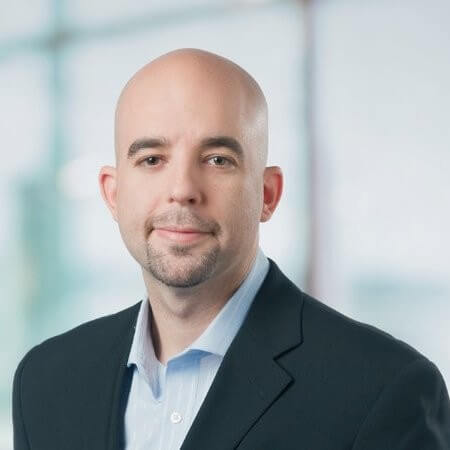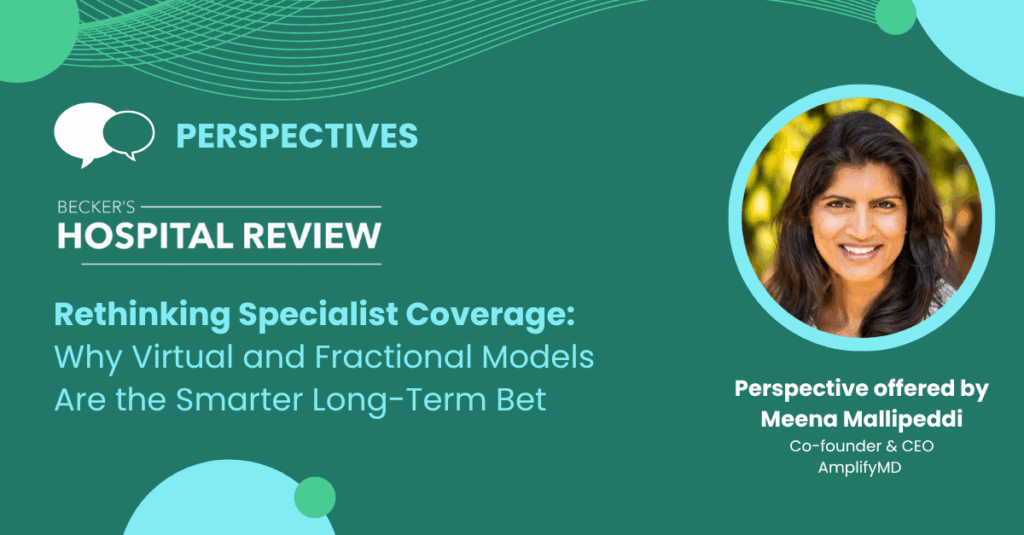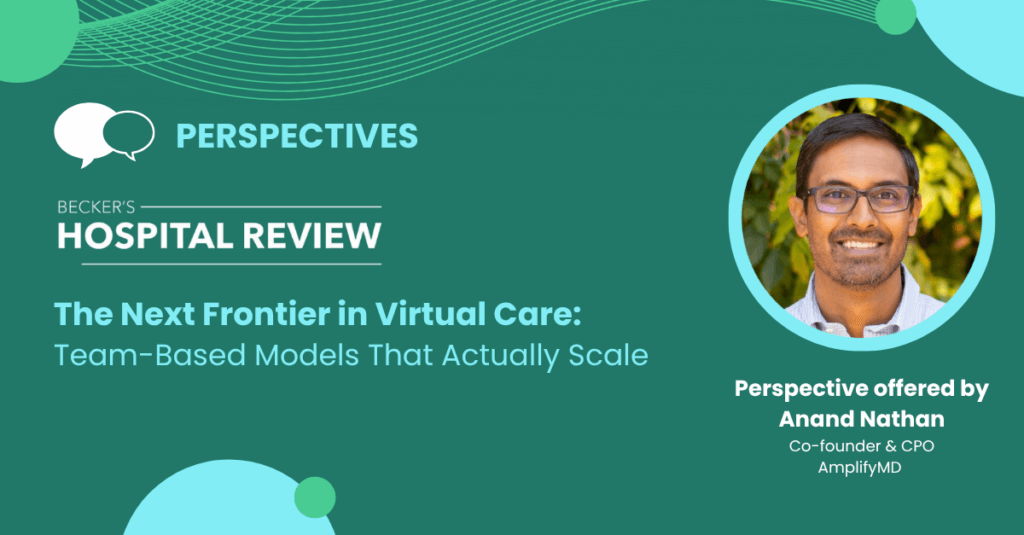AmplifyMD’s CEO, Meena Mallipeddi, regularly speaks with innovative healthcare leaders on her podcast, The Seamless Connection. This Q&A comes from her conversation with Bradd Busick, Chief Information Officer at MultiCare. (The podcast conversation has been edited and condensed.)

Bradd Busick
CIO, MultiCare
What brought you to healthcare?
I had a call from a former roommate, who is now one of our chief medical officers at MultiCare, about the position. I had spent time in the philanthropic space, including working with the Bill and Melinda Gates Foundation, so I was familiar with jobs that had an impact, which is really important to me. When I learned about what MultiCare was looking to do, I jumped at the opportunity.
I started my role here right at the beginning of COVID and was immediately thrust into helping with MulitCare’s command center. We were asked to innovate at a rate nobody’s really done before. Looking back, I’m grateful for that experience because it launched a new importance for IT in healthcare.
Can you expand on that? How has the importance of IT changed?
Well, first, I think for IT to earn the right to be a thought leader, we have to meet the staff where they are and understand their pain points. Certainly, technology can save time, streamline processes, and improve efficiency, but we need to understand what the problems are. At MultiCare, my team and I rounded with staff to personally see their workflows and their needs. We identified where we could reduce clicks, save time, and automate tasks. Rather than have a nurse walk back and forth to the pharmacy, we could have a robot do that. We could automate transcription services – all things that allow our staff to spend more time on patient care.
The second part of what makes IT important is communicating these efficiencies so that other departments or facilities are aware of what we’re doing. That’s how we start getting economies of scale. If our staff is more efficient, we’re reducing tension and friction, and it’s a more enjoyable place to take care of patients, which is ultimately what we’re trying to do. In fact, we’ve embedded clinical informaticists that function as a channel to IT – to be the eyes and ears on the ground as a partnership. It’s a great example of “show me, don’t tell me” and has been very successful for us.
Since you started your career at MultiCare right when COVID began, how did that impact your view on IT in healthcare?
I’ll never forget my second night at MultiCare, where I was leaving the command center and encountered a nurse who said, “I need your help.” She said, “We have families that are not able to say goodbye to their loved ones because we locked down all our floors. I literally have nurses using their personal FaceTime so families can say goodbye.” And this just hit me at the core. So that weekend, I found a solution that was HIPAA compliant and made sure it was safe clinically and able to be used for palliative care. I came back to present it to the nurses, and early into the presentation, this nurse said, “I’m sorry to interrupt, but does it work?” After I said, “Yes, it works,” she said, “Suit him up.” I put on the PPE and walked into the COVID ward, where a 34-year-old woman was in bed, intubated, and the nurse said, “Show me how it works.” We pulled up EPIC and grabbed the next of kin number. This individual got sent a text message, clicked on it, enabled access to his microphone and camera, and was immediately connected to his sister. I watched him say goodbye to her. That moment rewired me.
How has virtual care helped in provider retention at MultiCare?
It’s actually one of the core parts of our strategy for retention. Four years ago, we wouldn’t have thought about providers caring for patients from their homes, with access to EPIC, meeting patients virtually with someone in the room to assist the patient. Today, that is very much table stakes.
Are your patients accepting virtual care?
Response from the patient community has been incredibly positive and is leaving them questioning, “Why do I have to come to the hospital at all?” And why can’t we get equipment delivered to a patient’s house via drone so a provider can listen to that patient’s heart or look into their ears? Other industries are doing this – why not healthcare? That’s where we are going, and it’s going to be disruptive.
With many competing resources in healthcare, where do you find the financial backing?
We’re operating with a 28% lower budget than we had in 2020. It’s all about the economy of scale we get by leveraging platforms as opposed to point solutions. I don’t necessarily need ten people to run ten different point solutions when I could use three to run one platform. It’s a very different way of thinking.
What excites you about the future?
I’m excited about how we can build more automation into our platforms. Whether that’s an intranet for our own staff, remote patient monitoring, or tele-neurology, the applications are vast, and the challenge lies in creating a seamless experience for both clinicians and patients. The capabilities are endless and desperately needed.
Listen to Bradd Busick’s entire conversation with Meena Mallipeddi on Episode #22 of The Seamless Connection podcast hosted by Slice of Healthcare.





